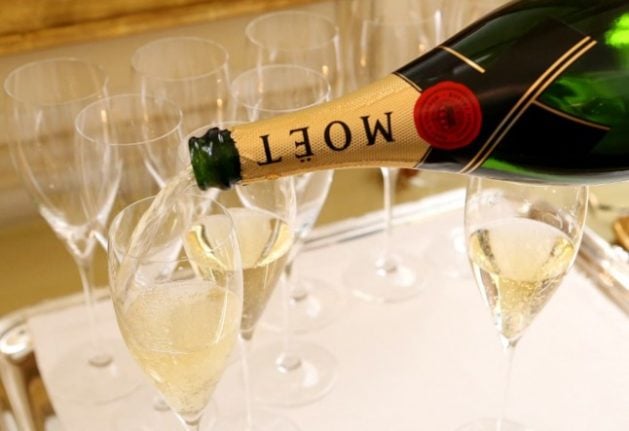“Our Champagne has its own very specific taste and is characterized by its quality and finesse,” company CEO and part owner Kristofer Ruscon tells The Local.
The story of Hatt et Söner began three generations ago when grandfather Ruscon, a blind taster of fine wines, tasted Champagne from a Côte des Blancs vineyard.
Falling in love with the exquisite taste he placed a standing order of 1,000 bottles annually.
Then, six years ago, the family found out that the vineyard was up for sale. Having been in the wine trade since 1825, the family wanted to purchase it but needed financial backing.
Looking for investors, they turned their eyes to Sweden.
The vineyard is now owned by five Swedish families, with Kristofer’s father Michel, the only Frenchman, as chairman.
“That was the beginning of Hatt et Söner and everything was finally signed and sealed in January 2012,” Ruscon explains.
The vineyard is situated near the small French village Bergères-les-Vertus some 20 kilometres south of Épernay in north eastern France. It is one of the highest ranking villages in Champagne, known as a 95 percent Premier Cru-village.
The company specializes in the select Chardonnay grape, but also grows a Pinot Noir. They are established in the Côte des Blancs, which is seen by connoisseurs as the best Champagne region.
Raised in Paris until the age of eleven, Ruscon’s Swedish connection comes through his mother:
“It is the usual story, really. My father, who is French, worked with a number of Swedish companies, met a Swedish girl and fell in love.”
The name, Hatt et Söner, stems from another of the family’s earlier ventures.
“My family has always been in trade and at one point we owned a few factories in the Alps which manufactured hats for Parisian fashion houses. So we thought that the Swedish word for hat; Hatt and söner for sons, would be an appropriate name for the company,” says Ruscon.
The Swedish connection, although not making much of a difference abroad, may prove important for the Swedish market, Ruscon believes.
“In Sweden, a Swedish product is a sign of quality. Swedes are also getting so much more interested in wines than they were before.”
At the moment, Sweden’s state-run monopoly alcohol shop Systembolaget stocks the four first champagnes from the house, with prices ranging between 350 and 900 kronor ($53.70 and $138).
In the future, however, the company is planning on introducing a larger selection, having recently purchased old oak vats in which to mature the wine. The company’s ambition is to become a global brand while trying to be as environmentally friendly as possible.
“We implement what is known in France as ‘la methode raisonée’, which means that we only use pesticides when it is necessary and not as a matter of course. We are also looking at possibilities involving organic farming of the grapes.
First and foremost, Ruscon’s concern is maintaining and developing the brand’s reputation for quality and finesse.
“We grow only the best Chardonnay grapes and we only use the first pressing, selling the second and the third on to other companies. We also mature the wines for a minimum of 6 years in our cellars and have a very low sugar level – only six grammes per litre,” Ruscon tells The Local.
“We think of it as ‘honesty in the bottle’.”
Rebecca Martin



 Please whitelist us to continue reading.
Please whitelist us to continue reading.
Member comments